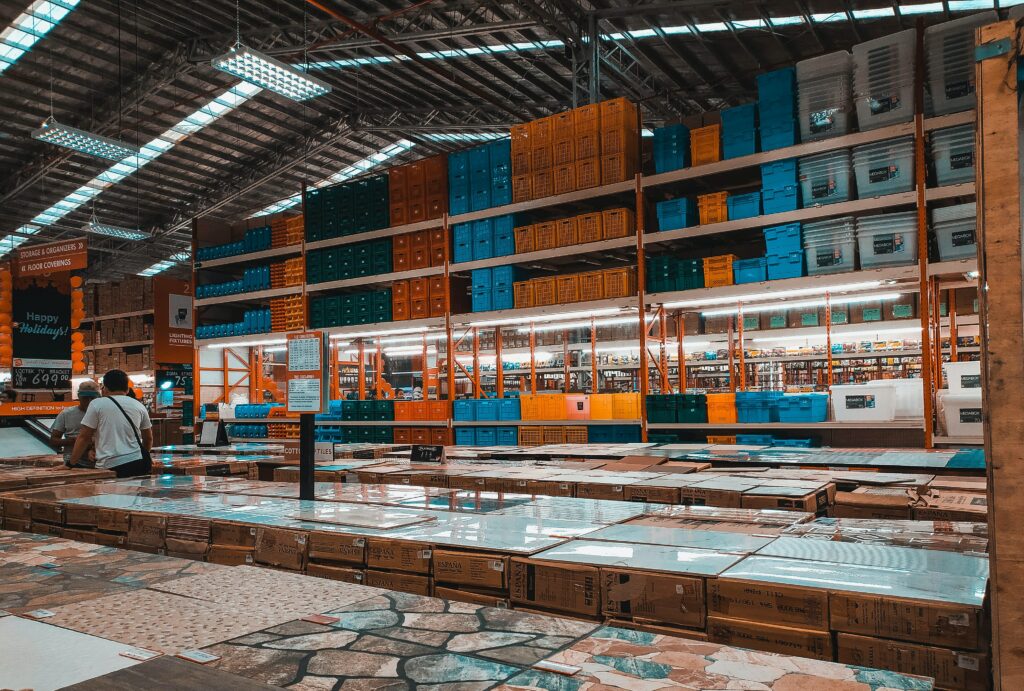Ksapa recently teamed up with Schneider Electric and Michelin in a webinar, to discuss cross-supply chain socio-environmental risk management. You were again many attending. Here we address the underlying challenges with a 3-part plan for businesses to better manage socio-environmental risks across the supply chain.
The regulatory landscape is relentlessly pushing business to better manage socio-environmental risks across the supply chain. For instance, the EU Council’s Conclusions on Human Rights and Decent Work in Global Supply Chains were recently approved. As a result, the European Commission will start work on a new legal framework for mandatory corporate due diligence. Also part of its brief is the launch of an Action Plan on sustainable supply chains. This would package the promotion of Human Rights, socio-environmental due diligence standards and transparency by 2021.
The goal is ultimately to demand companies review the scope and depth of their risk management and remediation procedures. From there, they may strengthen access to remedy for rightsholders and ultimately take steps to prevent these risks. This while continually assessing the effectiveness of these measures.
So just what will it take for companies to develop, implement, monitor and communicate effective remediation procedures to address their social-environmental risks? How can they ensure they cover their entire supply chains, on top of their operations and subsidiaries? In an effort to provide actionable solutions to key interrogations of our time, Ksapa outlines a 3-part plan for businesses to better manage cross-supply chain socio-environmental risks.
Navigating contrary injunctions to better manage socio-environmental risks across the supply chain
More and more are businesses subjected to contrary injunctions. In other words, they must navigate a global market in turmoil and mitigate cross-supply risks as they go.
- Mounting pressure – The UN Business and Human Rights Forum echoed the mounting pressure on businesses to step up their socio-environmental risk management. Meanwhile, the UN Principles for Responsible Investment launched a multi-year Human Rights work program. In short, Human Rights policies are good for business. They shore up risk valuation and answer growing stakeholder expectations. The result? Even greater pressure on corporates – this time from their investment partners. That pressure really is strong now that Swiss cantons turned down a national due diligence framework. Their companies will nevertheless have to comply with the upcoming EU directive to maintain commercial activities across the European market… not just the milder counter-proposal that automatically came into force.
- Interwoven risks – The Institute for Human Rights in Business also signalled the interconnectedness of social and environmental risks. A recent report in fact doubled down on integrating approaches to strengthen Human Rights protections, climate justice and sustainable development. In times of Covid-19, this could contribute to a recovery that is both green and just.
- Complex supply chains – On the other hand, supply chains are global, complex and interwoven. Consider agricultural commodity supply chains. Tens of thousands of suppliers typically cater to Fortune 500 buyers. Businesses must therefore develop a keener understanding of their upstream, to track and manage their cross-supply chain socio-environmental risks.
Adding further complexity to the mix, Covid-19 adds 2 features to the global push for cross-supply chain risk management. First, the pandemic caused the worst recession since 1929, spelling out all-out cost-control rather than futureproof supply chains. Lockdown measures have also forced key players to question the relevance of their current supply structures. That is certainly not conducive to investing in supply chain socio-environmental performance.
Ksapa’s 3-part plan to better manage socio-environmental risks across the supply chain
Businesses are struggling to balance proactive socio-environmental risk remediation and reactive supply chain management. All this against a backdrop of converging crises – which are not going away anytime soon. Before these contrary injunctions bring their supply at a standstill, businesses can get better at identifying, managing and preempting their socio-environmental risks. Here are 3 ways to proceed.
1. Weed out the root causes of socio-environmental risks
Guest speakers at Ksapa’s webinar agreed the best type of risk management is the one that stamps out risk altogether. They went on to share 3 key ways Schneider Electric and Michelin are sizing up their very business model.
- Cut, reduce, go circular – When a person suffers from an unhealthy diet, doctors first get started on their meals. Much in the same way, Michelin et SE focused on reducing the quantity of produce moving through their supply chains. For example, Michelin works to work on tire resistance to lower fuel consumption and decrease pollutant and carbon emissions across the use phase. Circularity is also a great tool, given it mathematically affects risk exposure. It also cuts costs and addresses shortages – both top business imperatives in times of Covid-19.
- Loose high-risk components – Some of the properties that make products useful also make them hazardous. If these risks cannot be controlled, these components should be phased out and substituted from the supply chain. Take Schneider Electric and Michelin. Both have issued bold Climate strategies. Schneider Electric opted to save the equivalent of 4 million tons of carbon per year by publicly committing to elimate all SF6 greenhouse gases by 2025. The SM AirSeT medium-voltage switchgear now uses pure air insulation instead.
- Embed socio-environmental risk management in quality control – Michelin and Schneider Electric strive to address planned obsolescence by licensing their services rather than their products. This can mean selling a kilometer-worth of tire usage or energy savings. Such initiatives put socio-environmental risk management on par with quality control in terms of characterizing assets and industrial activities.
While they stand to positively affect cross-supply risk management, these innovations impact business models and buyer-suppliers interactions. That is where the Sustainability Development Goals come in. They structure corporate action without transferring negative externalities onto their ecosystem of stakeholders.
2. Structure Supply Chain Action Against the SDG
The UN Sustainability Development Goals offer a comprehensive framework for businesses to focus on their strategic sourcing process. SDG 17 in particular promotes coalitions formats.
- Methodologies – Echoing the general aspiration for harmonized methodologies and comparable data, Schneider Electric joined the Responsible Business Alliance. This way, it may work with other industrial players facing the same socio-environmental risks. Tapping into a common database is a prime example of how collaborative initiatives help businesses save time and resources.
- Strategic alignment – Partnerships are also conducive to cross-value chain alignment. This again optimizes corporate efforts to engage the suppliers, subcontractors and end users. Michelin and the Global Platform for Sustainable Natural Rubber work together to address this specific supply chain’s socio-environmental risks. Signaling their effectiveness, the Group won the Smart Mobility category of the EuroCham Sustainability Awards.
- Addressing sensitive issues – Businesses are often encouraged to communicate their socio-environmental commitments with clients, beneficiaries and affected stakeholders. This both in terms of outcomes and action plans. Engagement teams, however, tend to shy away from sensitive issues they consider too political or disconnected from the business agenda. Coalitions allow companies to address these issues in a way that spreads the risks and catalyzes sectoral action. The Global Network Initiative for instance focuses on telecom and social media operators in relations to governmental monitoring of populations. It recently hosted a panel on the specificities of human rights due diligence in the ICT sector. Likeminded groups could help businesses tackle the issue of forced labor. This has recently come to the fore because of multinationals being linked to the persecution of the Uighurs.
3. Digitally manage supply chain scale and complexity
Both Schneider Electric and Michelin rely heavily on audit campaigns to assess the efficacy of their socio-environmental risk remediation processes across their global supply chains. They also recognize their limitations in managing the complexity, scale and path their public commitments demand.
Covid-19 further enshrined this reality and crystallized contrary injunctions weighing in on business. This invites greater scrutiny into resource allocation, for companies to demonstrate the intentionality of their efforts. This is particularly true amid growing uncertainty and fewer resources. As it turns out, digital tools hold a key to these issues of scale, predictability and cost-effectiveness.
It has become a trope to state measuring is managing – the fact data informs sound decision-making nevertheless holds true. Key players are therefore turning to digital tools to help them automate collection across complex data universes. First, it helps them identify material risks. In the near-future, it could infer additional insights to predict socio-environment risks across their supply chains. Among key tools, Big Data could help businesses handle the complexity of their supply chains and bring their risk remediation processes at the necessary scale.
Data also drives greater transparency. This at a time of stakeholder mistrust is pervasive and corporate performance lower from one year to the next. The Corporate Human Rights Benchmark notably found most of the 229 companies it analyzed struggled to demonstrate robust policies. Instead of extrapolating on past performance, businesses must favor predictive models, to compare the potential of various risk mitigation mechanisms. This way, they may redirect or reinforce their efforts in a cost-effective manner.
Conclusion | New perspectives from the digital transition
At the heart of impact-based approaches is the development of spatially-explicit data, for businesses to assess their supply chain risk management and remediation processes. Given the sensitive nature of cross-supply socio-environmental risk remediation, industrial players would do well to cross-reference their data, local stakeholder input and their own – experience-driven and qualitative – assessments.
Ksapa is helping organizations harness their data to adapt their stakeholder engagement and risk mitigation processes accordingly. This is how we are upgrading supply chain programs and leverage the potential of digital solutions and innovative financial models to manage complexity, scale up risk mitigation solutions, and develop impact driven supply chain programs with Fortune 500 companies. As a bonus, demonstrating actual impact equals shoring up businesses’ value-for-money. Data and impact nurture goodwill – not least of which from investors. This will no doubt prove essential for businesses to align the necessary resources to scale their efforts across their supply chains.
As a sustainability and corporate responsibility consultant, Margaux joined Ksapa with international experience in public, private and non-profit organizations. She had previously worked for the Deloitte and Quantis sustainability consultancies, lobbied for environmental research on behalf of the INRA and contributed to Total’s extra-financial reporting.
A Franco-American citizen, Margaux holds sustainability certifications from the IEMA and Centrale-Supélec on top of a Masters degree in History, Communications, Business and Internal Affairs.
She is fluent in French, English and Spanish.






